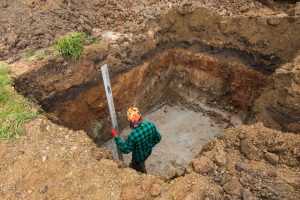What to Do When a Septic System Fails
Forgetting about the septic once the septic system installation is complete is a mistake many business and homeowners make. A failed or failing system is often the last sign of a problem and must be addressed immediately. The worst-case scenario often is more expensive and time-consuming than regular inspections and maintenance of the system would be.
Like sewer lines for a city, septic systems allow waste to be carried and stored away from the home or business. Waste enters the tank through a sewer line from the building and begins to break down over time. The effluent water on the top is then released through an outlet to flow into a drain field for further filtering before mixing with the surrounding soil.
The number one cause of failure after septic system installation is excess water. The ground can only absorb so much water and runoff from driveways, roofs and the road can further stress the system. Another cause of failure is a lack of inspections and maintenance on the system. Other causes include flaws in the system, improper construction, improper sizing, built on a steep gradient, parking or driving on the soil absorption unit, over packed soil or tree roots clogging or crushing the pipes or drain field.
Local sanitation authorities often want to approve any measures taken to handle issues with a septic system. Health department permits may also be required before work is done. Avoid adding more soil to the drain field or other quick fixes as they only punt the inevitable down the line. Redirecting the wastewater to a farm drain tile, drainage well, storm sewer, sinkhole or road ditch can cause ground water pollution.
Installing additional absorption lines, repairing physical damage and improving drainage may not fix the issues leading to a new septic system installation. It is more cost effective and less troublesome to perform regular maintenance including pumping the tank.

